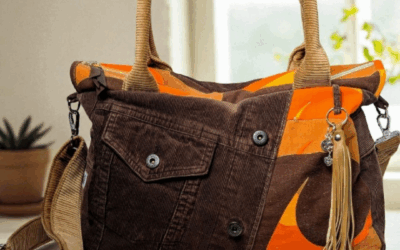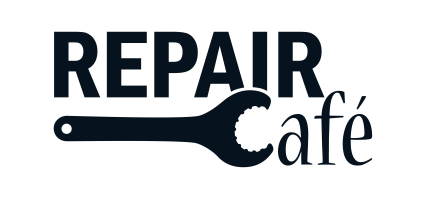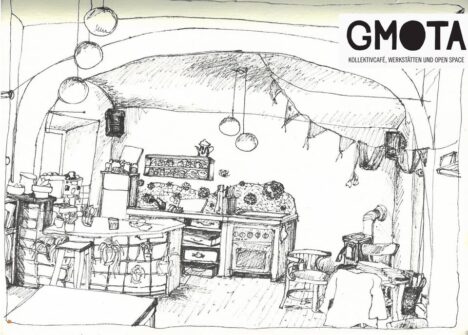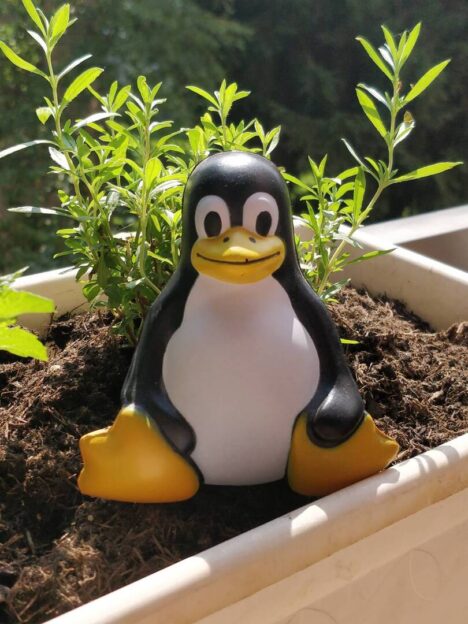Original post by dicle on May 24, 2023. Translated by Lisa Scheer in 2023/24.
Disclaimer: Some of the links in this post might redirect you to a site in German. Feel free to use Machine Translation (such as DeepL or Google Translate) to get the information provided on these sites.
A short summary on the history of fashion
Many years ago, it was not as easy for people to buy clothes as it is today. Clothes were expensive and not accessible for everyone. The little clothes we owned were well cared for, repaired and worn by others. But industrialisation and increasing global exploitation led to a revolution in production. Because of this, the fashion industry and our fashion consumption were able to grow. Especially the production of clothes made from synthetic fibres added to this.
In the second half of the 20th century „fast fashion“ was born. This happened because particularly young people of this period wanted to have more fashion. Famous people and companies favoured this by presenting cheap clothes as fashionable at the beginning of the 21st century. More and more online shops have entered the fashion market since then and they are advertising thousands of new clothing pieces each week.

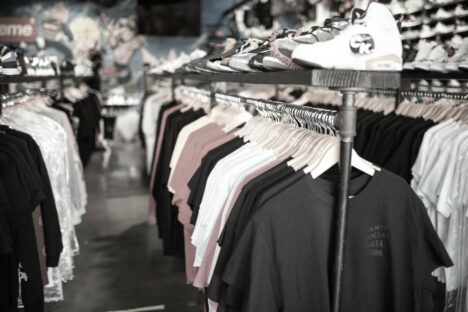
The dark sides of our growing fashion consumption
Fashion has become more obtainable ever since „fast fashion“ has started to appear. A lot of people love to dress in different clothes and fill up their closets with numerous pieces that stem from the newest collections of big fashion brands. Unfortunately, this high consumption of new clothes has its dark sides as well. While the production of fashion has doubled since 2000, the cost for the end users only raised by 10 %. This goes to show how cheap fashion has become for individuals. This development has many negative consequences:
- Clothes lose their value, which is why we get rid of them after short periods of times or leave them hanging untouched in our closets. A survey on fashion consumption by Greenpeace showed this as well.
- As the production of clothes grows, so does the production of CO2-emissions. Starting with production until a piece of clothing is worn, each year 850 million tons of CO2-emissions are created.
- Synthetic fibres such as polyester allow for cheap production of clothing but create more CO2-emissions than cotton. Additionally, while being worn clothing pieces made out of polyester harm the environment and animals greatly, as microfibers end up in water through the washing process.
- The water needed to produce new clothes is enormous. While there is more water needed in clothes with a higher cotton percentage, it sinks the higher the content of polyester is.
- The problem with recycling: Heightened consumption leads to a heightened production of clothing waste. On one hand there is a surplus on second-hand clothing of bad quality, on the other hand clothes made from more than one fibre make it difficult to recycle them into new clothing. An essential problem are the high costs that arise during recycling processes.
This only presents a small part of issues that are created through the dominating fashion industry. You can find out more here. These all are reasons why buying new clothes has become less attractive. Particularly, when you have taken a closer look at this topic.
Trends in moderate fashion consumption
Many of us already know about the mentioned (and other) issues of the growing fashion industry. This is why new trends have emerged. These trends are opposed to the current dominating habits in consumption and further a responsible sense of fashion consumption:
- Opposing „Fast Fashion“, „Slow Fashion“ is steadily growing more popular. This refers to durable clothing made from „sturdy materials“, created through „high quality workmanship“ and that has a „timeless design“. This also reduces the amount of newly bought clothes, which is gentle on the environment.
- Minimalism: „Less is more“ has become the motto of many people. It’s relieving to get rid of a surplus of objects, including clothes, which is why a growing number of people follow this trend.
- While buying used clothes used to be a sign of low prosperity some years ago and therefore was unpopular, second-hand fashion is hyped up. Many of us are proud and happy when we find unique clothing pieces and combine them fashionably. The offer of second-hand fashion is growing offline and online. Big fashion companies also try to follow this trend.
- When buying new clothes a lot of people look out for sustainability seals, which is why these have become more popular. These seals describe whiche social and ecological standards the company that produced the clothing piece adheres to. Particularily a lot of small and medium-sized companies focus on sustainably produced clothing but also bigger fashion producers try to offer sustainable products for people who put importance on sustainability.
To conclude
About 10 % of greenhouse gas stems from the textile industry according to the European Parliament. This is an enormous amount. Sustainable textile production and responsible fashion consumption could improve this problem dramatically. But a lot remains to be done as of right now. Different trends towards sustainable fashion are interesting and allow for a lot of creativity. Do you know about other trends like this? Share them with us!
More interesting posts on our website:
- fast fashion
- Online-Shops für Secondhand-Mode
- Greenpeace-Umfrage: Modekonsum
- Wie funktioniert ein Kleidertausch?
- Gütesiegel in der Modeindustrie
- Capsule Wardrobe
- Kurzvideo: Das Ende unserer Kleidung
- Movie: The True Cost – der Preis der Mode
Sources:
- https://greenwire.greenpeace.de/system/files/2019-04/s01951_greenpeace_report_konsumkollaps_fast_fashion.pdf
- https://link.springer.com/chapter/10.1007/978-3-658-34322-4_7
- https://www.europarl.europa.eu/news/de/headlines/society/20201208STO93327/umweltauswirkungen-von-textilproduktion-und-abfallen-infografik#:~:text=Sch%C3%A4tzungen%20zufolge%20verursacht%20die%20Modebranche,654%20kg%20CO%E2%82%82%2DEmissionen%20verursacht.
Anmerkung der NiG-Redaktion:
Falls du keine wichtigen Beiträge oder Termine von uns verpassen willst, abonnier doch bitte gerne unseren Newsletter! Er kommt unregelmäßig und nicht zu häufig – versprochen. Oder schau regelmäßig in unseren Veranstaltungskalender.
Wenn dir gefällt, was wir auf dieser Plattform tun, nämlich bereits seit 2017 über Nachhaltigkeit, Umwelt- und Klimaschutz zu informieren, dann unterstütz uns doch bitte auch finanziell, um unsere Website in dieser Qualität und Fülle weiterführen zu können – uns hilft jeder Beitrag!
Verein „Nachhaltig in Graz“
BIC: STSPAT2GXXX
IBAN: AT20 2081 5000 4200 1552
Verwendungszweck: Spende/Sponsoring (Mehr zum Sponsoring hier)
Du kannst dir auch gerne unsere kostenlose App aufs Handy laden, damit kannst du Informationen, Veranstaltungen und vieles mehr entdecken: App Nachhaltig in Graz




